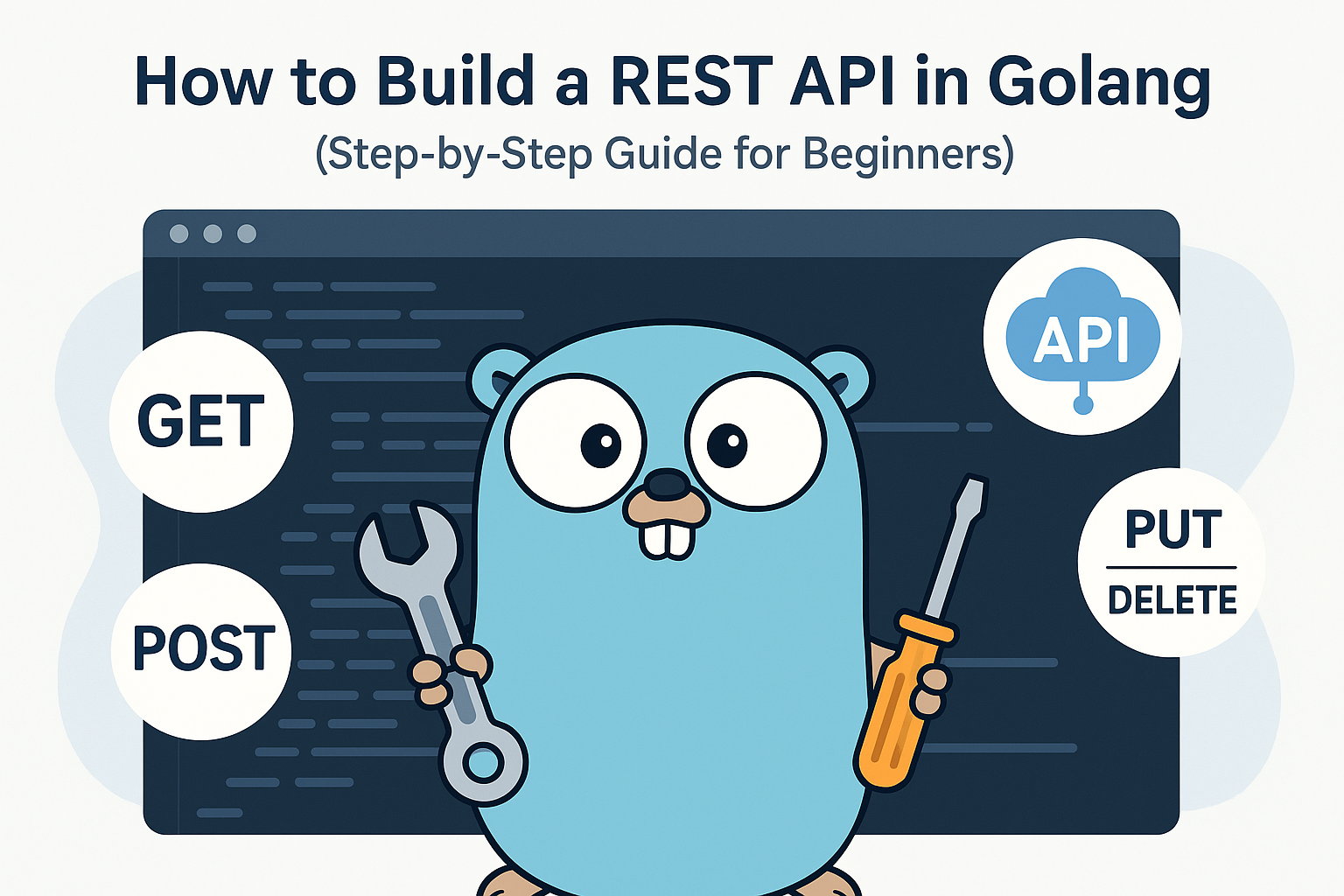Adding Swagger (OpenAPI) documentation to your Go Web API is an excellent idea for improving developer experience and enabling automatic API docs generation.
To integrate Swagger with your project, we’ll use:
It’s the most popular library for generating Swagger docs in Go.
Step-by-Step: Add Swagger to Your Project
Step 1: Install swag CLI
You need to install swag to generate the Swagger docs from comments.
go install github.com/swaggo/swag/cmd/swag@latest
Make sure your $GOPATH/bin is in your PATH. You can check:
export PATH=$PATH:$(go env GOPATH)/bin
Verify with:
swag --version
Step 2: Add Dependencies to Your Project
Run the following to install Swagger HTTP handlers:
go get github.com/swaggo/http-swagger
go get github.com/alecthomas/template
go get github.com/swaggo/files
Step 3: Add Swagger Annotations
You add annotations in the main.go and your handler functions.
main.go — with Swagger setup
package main
import (
"fmt"
"log"
"net/http"
_ "go-web-api/docs"
httpSwagger "github.com/swaggo/http-swagger"
)
// @title Go Web API Example
// @version 1.0
// @description This is a simple Go web API with Swagger.
// @host localhost:8080
// @schemes http
func main() {
// Swagger endpoint
http.Handle("/swagger/", httpSwagger.WrapHandler)
fmt.Println("Server started at :8080")
log.Fatal(http.ListenAndServe(":8080", nil))
}
controllers/message_controller.go — Add annotations
package controllers
import (
"encoding/json"
"net/http"
"go-web-api/models"
)
// @Summary Welcome endpoint
// @Description Returns a welcome message
// @Tags Home
// @Accept json
// @Produce json
// @Success 200 {object} models.Message
// @Router / [get]
func Home(w http.ResponseWriter, r *http.Request) {
msg := models.Message{Status: "success", Message: "Welcome to Go Web API"}
w.Header().Set("Content-Type", "application/json")
json.NewEncoder(w).Encode(msg)
}
// @Summary Create message
// @Description Accepts a message and adds it to memory
// @Tags Messages
// @Accept json
// @Produce json
// @Param message body models.Message true "Message Body"
// @Success 201 {object} models.Message
// @Failure 400 {string} string "Bad Request"
// @Router /messages [post]
func PostMessage(w http.ResponseWriter, r *http.Request) {
var msg models.Message
_ = json.NewDecoder(r.Body).Decode(&msg)
messages = append(messages, msg)
w.WriteHeader(http.StatusCreated)
json.NewEncoder(w).Encode(msg)
}
Step 4: Generate Swagger Docs
Run this command from the root of your project:
swag init
if main.go is not in root directory it might throw an error in this case you need to run the below command to generate the docs folder in the root directory.
Solution: Tell swag Where to Look
Use the --generalInfo and --dir flags to explicitly specify where main.go and your Go code live.
swag init --generalInfo cmd/main.go --dir ./cmd
| Flag | Meaning |
|---|---|
--generalInfo | path to your main.go file |
--dir | folder to recursively scan for annotations |
This will generate two folders:
go-web-api/
??? docs/
? ??? docs.go
? ??? swagger.json
? ??? swagger.yaml
Step 5: Run Your Server
go run main.go
Now visit:
http://localhost:8080/swagger/index.html
You'll see an interactive Swagger UI with your endpoints.



